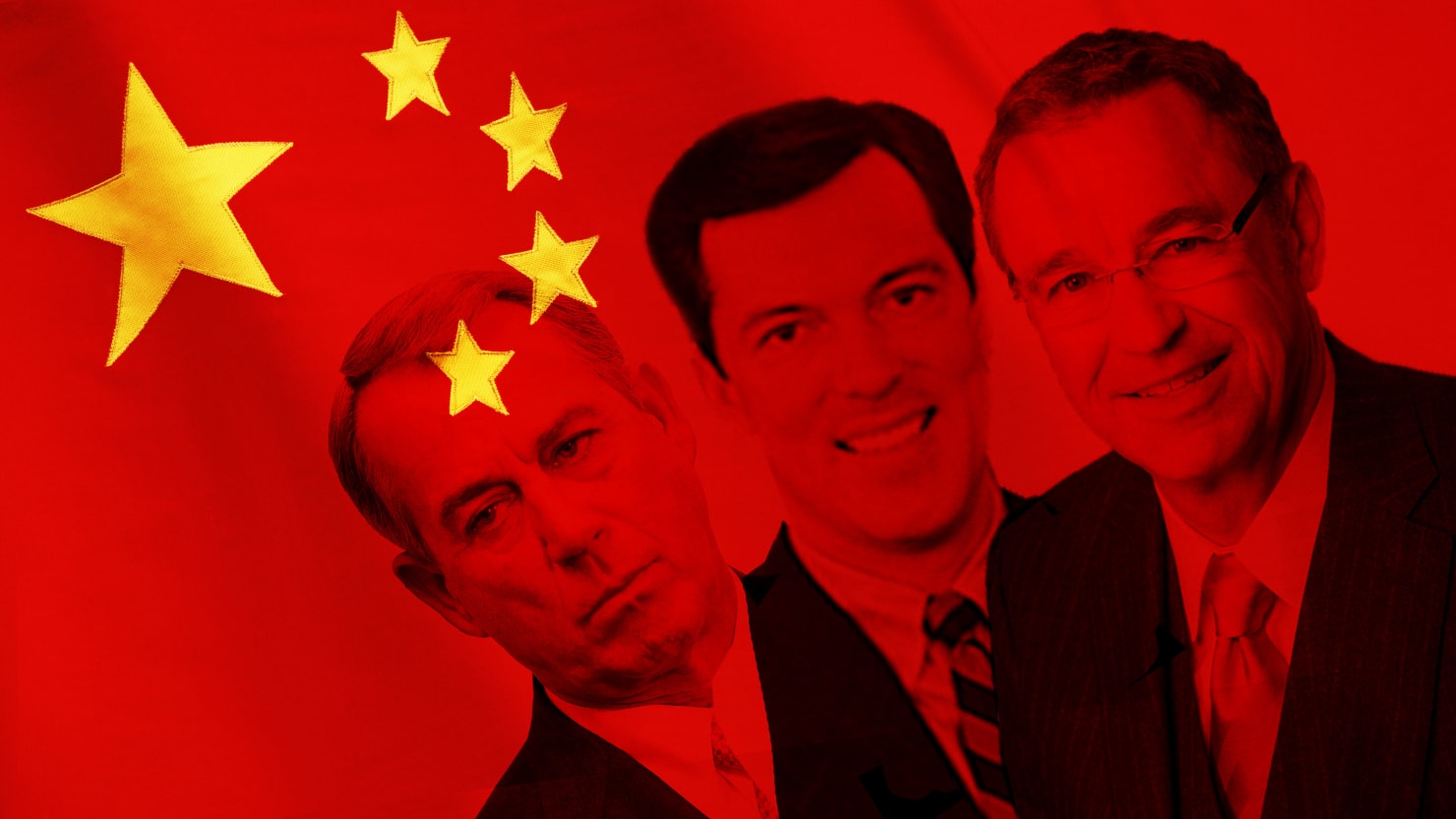This is gonna be a fun explainer about China, Trade, Huawei, IP theft & 5g. You are about to become an expert and the life of any party*
*your results may vary
Table of Contents
- China Trade
- US then imposed 10% tariffs on $200b in imports from China with a trigger of January 1, 2019 for tariffs to increase to 25%.
- On February, 2019, the USTR granted a second suspension on any new China tariff hikes ‘until further notice’.
- 301. You’ve heard of this, your about to find out what it is. Buckle up.
- The report lists ten IP Agreements the Chinese government signed from 2010 to 2016…
- IP theft and technology transfer
- An airplane…
- It cost America 800 jobs and wiped out an American company
- Two more wondrous examples.
- SECTION 301 PROCEDURES
- Two bigly issues holding up a completed trade deal
- Huawei affair(s)
- Huawei and 5g
- The 2018 Defense Authorization Act
- Huawei and 5G equipment in Europe is complicated.
- Huawei is entrenched in the EU, as it has about a third of the telecom equipment market.
China Trade
- U.S. goods & services trade w/China was $737b in 2018
- Exports were $179b. imports were $557b.
- Our trade deficit with China is $378b
To resolve this generational deficit, in the summer of 2018, the President Trump initiated 25% tariffs on $15 billion in imports from China. China retaliated against US exports of agricultural and other products.
The US in September 2018 imposed 25% tariffs on second $35 billion in imports from China in response to China retaliation. China retaliated again.
US then imposed 10% tariffs on $200b in imports from China with a trigger of January 1, 2019 for tariffs to increase to 25%.
They were granted an extension. The first 50b of the 200b is ‘Ad Valorem Duties’ – in proportion to the estimated value of the goods or transaction concerned that resulted from IP theft
On February, 2019, the USTR granted a second suspension on any new China tariff hikes ‘until further notice’.
In Early May, 2019, notifying the world as only Trump can…with a tweet, the suspension was removed and tariffs were increased to 25% and a NEW 25% duty would be imposed on the remaining $325 billion worth of imports from China “shortly”.
The trade war has been yielding billions to the Treasury billions of dollars
Because of the existing US trade deficit the US could weather a trade war much better than China. We’ve got nowhere to go but up, China has nowhere to go but down. Now we are negotiating whether its a plunge or a trip.
301. You’ve heard of this, your about to find out what it is. Buckle up.
In August 14, 2017, President Trump instructed US Trade Representative Robert Lighthizer to investigate under “section 301” several urgent issues:
(abbreviating)
- Chinese government utilizing opaque & discretionary administrative approval processes, joint venture requirements & other mechanisms in order to require or pressure the transfer of technologies & IP to Chinese companies
- Policies and practices that deprive U.S.companies of the ability to set market-based terms in licensing and other technology related negotiations and undermine U.S. companies’ control over their technology in China.
- The Chinese government reportedly directs and/or unfairly facilitates the systematic investment in, and/or acquisition of, U.S. technology companies
- Determine if the Chinese government is conducting or supporting unauthorized intrusions into U.S. commercial computer networks or cyber enabled theft of IP, trade secrets, or confidential business information
The report was completed In March, 2018.
The report lists ten IP Agreements the Chinese government signed from 2010 to 2016…
All those agreements between the US and China were (drumroll) breached.
China ignored its obligations and continued its cyber hacking to steal US IP. Its excuse has been that it is still a poor, developing country, and deserves a pass from its commitments. They challenged Bush and Obama. They won. They also bribed a lot of people, they won that too.
They bribed Mitch McConnell and his wife, Cabinet member Elaine Chao

And they enlisted the Washington DC mercenaries, China paid exorbitant fees, it was their war plan to attack from within, money does that…

IP theft and technology transfer
Calc’ing the value of IP is thorny. One way is to approximate what pilfered IP would take in the market. But this schema is tricky… If/when China steals IP and can’t figure out how to make a product with it, the loss from the theft is zero. If the calc is measured by competing products, and there aren’t any, the harm could be zero, there is likely no market for a square wheel.
Stolen IP doesn’t mean that the pilfer’d has lost the ability to make the product. What has happened is that it now faces a new competitor. China disregards its commitments to trade agreements and WTO obligations…and it cripples foreign competition…
It has created a protected Chinese market, gives its internal companies subsidies for foreign sales & imposes NONTARIFF barriers to hobble American companies. It’s a logical strategy, but flouts the rules and it’s been permitted, bribes do that.
Stealing IP doesn’t solve all of China’s schemes, they also need the technical and manufacturing proficiency to make the product. Here’s an example of that in motion:
An airplane…
China used to make crappy Russian airplanes from crappy factories. China wanted to change that and become ‘competitive’. China announced it wanted to buy billions in Western planes, the good stuff. Western firms rushed to sell it aircraft…HOWEVER…China required COproduction, Chinese companies must work w/Western aircraft firms to the pane and parts.
This went on for 2 decades and it taught Chinese companies essential production know-how. This is ‘tech transfer’ – it’s not IP theft. The problem is not that China builds airplanes/parts, it IS that China uses its Gov subsidies and insists that its domestic airlines ‘buy Chinese’ and has installed barriers to foreign cos to gain an insurmountable advantage.
It cost America 800 jobs and wiped out an American company
AMSC, an American wind turbine company aka ‘clean energy’, China-based Sinovel was its biggest customer. Sinovel, fulfilling China’s ambitions, aimed to be the world’s largest wind turbine manufacturer.
In 2010, Sinovel had a bigly problem. It needed to QUICKLY retrofit thousands of its turbines to meet Chinese Government standards…But doing so would hit company’s profits, so it licensed the crucial tech it needed.
So.. Sinovel R&D managers stole the AMSC tech. China’s Sinoval was quoted as saying that R&D is “like cabbage”, so why not just take it?
After AMSC confirmed that Sinovel had swiped its tech, AMSC built in encryption to ensure Sinovel would continue to pay AMSC for its licensed software.
To work around this, Sinovel found itself a China loyal AMSC employee to steal the encryption. It cost China only 2m for the bribe.
With all the tech stolen and the capacity and knowledge to build it for themselves, Sinoval reneged on $100m+ in outstanding fees due AMSC. This nearly destroyed AMSC and 800 jobs were terminated within AMSC. Not only has Sinoval done all this, they were now direct competitor and sold their product into the world’s markets at an impossibly low price, because it was subsidized by the Chinese Government, that also owned 18% of the company.
Two more wondrous examples.
China stole Monsanto’s genetically modified corn seeds from a very large Iowa farming company. They also swiped genetically modified rice from Ventria Bioscience, a U.S. pharma company
Here’s a final, bloodier example, A Chinese cyberhacking operation acquired produced tech/IP/secrets that were incorporated into the latest version of China’s new J-20 stealth fighter jet

So, here we are…
The actions authorized under Section 301(c) include (abbreviated) (i) suspending or withdrawing the application of benefits of trade agreement concessions; (ii) imposing duties, fees, or other import restrictions (iii) withdrawing or suspending preferential treatment (iv) entering into binding agreements that commit the foreign country to provide compensatory trade benefits; or (v) restricting or denying the issuance of federal permits or other authorizations.
And…the USTR may take any actions that are “within the President’s power with respect to trade in goods or services, or with respect to any other area of pertinent relations with the foreign country.
SECTION 301 PROCEDURES
On January 31, 2019, after a round of negotiations were completed, the White House issued the attached statement:
“The talks covered a wide range of issues, including (abbreviated): (1) the ways in which US companies are pressured to transfer technology (2) the need for stronger protection of IP rights in China; (3) the numerous tariff and non-tariff barriers faced by U.S. co’s in China; (4) the harm resulting from China’s cyber-theft (5) how market-distorting forces, including subsidies and state-owned enterprises, can lead to excess capacity; (6) the need to remove market barriers and tariffs that limit U.S. sales (7) the role of currencies in the U.S trading relationship.
301 enforcement is a big stick to coerce China’s behavior, and in doing so, the downstream effects have bigly promoted U.S. manufacturing.
The U.S. manufacturing sector has added 466,000 jobs during the first full 25 months of Trump’s tenure, compared with 76,000 manufacturing jobs created in the preceding 25 months, according to Bureau of Labor Statistics data.
USTR Lighthizer stated that the name of the game is “enforcement, enforcement, enforcement.”
Two bigly issues holding up a completed trade deal
- IP Theft and spying. Although its broader and well beyond just Huawei, let’s call the whole tangle the “Huawei affair”
- The ruling party, Chinese Communist Party, cannot admit defeat, even though its citizenry are being devastated by US tariffs.
Huawei affair(s)
In January, 2019, the Justice Department issued two indictments against Huawei.
U.S. v Huawei Technologies and Cathy Meng, CFO and daughter of the owner, alleging evasion of Iran sanctions, bank fraud, and obstruction of justice.
The second indictment, DOJ TRADE SECRETS INDICTMENT HUAWEI, details Huawei’s theft of robot technology from T-Mobile.
The indictment states:
“Huawei…established a formal schedule for rewarding employees for stealing information from competitors based upon the confidential value of the information obtained. Employees were directed to post confidential information obtained from other companies on an internal Huawei website, or, in the case of especially sensitive information, to send an encrypted email to a special email mailbox.”
There is also a potential third indictment against Huawei for theft of a US intellectual property for diamond glass used for mobile screens.
Let’s move on…
Huawei and 5g
The 5g explainer. In 4G and earlier generations of wireless technology, the technology and operating system directed and controlled data traffic. With 5G, data will be processed through multiple points, starting with a system of radio towers. 5G wireless will operate at up to 100 times the speed of 4G.
By 2024, around 40 percent of the world’s population — and 22 billion devices, from cars to refrigerators to cellphones to traffic lights, will be on the 5G network.
And this causes new problems, and once again, Huawei is in the thick of it. In Europe, 5g technology and infrastructure will be that of Huawei. Small world.
The 2018 Defense Authorization Act
initiated and signed by President Trump, banned Huawei and ZTE technologies from use by the U.S. government and government contractors.
Anything that passes through Huawei technology could become intelligence for China. But “Democracy dies in Dankess” Washington Post, feels that we should let China spy:
Washington has pushed for a broad international ban, some governments in Europe believe they will be able to mitigate potential risks.
Huawei set up information security labs in Germany and the UK to facilitate government reviews of its source-code and network gear to reassure there is no ‘spy’ back door.
But source code could easily cloak vulnerabilities, additionally, the need for frequent software updates in 5G networks would outpace regulatory oversight.
“It’s important to remember that the threat is a combination of capacity and intent. Capacity can take years or decades to develop…but intent can change in a heartbeat.” – former Australian prime minister Malcolm Turnbull
Huawei and 5G equipment in Europe is complicated.
European telecom companies are already less profitable than their U.S. counterparts. Regulatory opposition to merger activity left Europe with a myriad of subscale networks that are too weak to pursue ambitious infrastructure projects. Falling prices and soaring levels of traffic squeezed profit margins.
There is as yet no European-wide policy for 5G telecoms equipment, so each nation/company has gone its own way.
Huawei is entrenched in the EU, as it has about a third of the telecom equipment market.
The cost of switching to another vendor and replacing all Huawei parts and components would represent a huge additional burden as these firms move toward 5G.
Europe, with rarely even a spark of its national interests, sees Huawei 5G technology as being more sophisticated and way cheaper than its own locals, Ericsson and Nokia. Crazy right.
Another bigly issue holding up the trade deal being completed, is that China has tried to convene the country around its nationalistic grudge match, we can call it ‘never again’, the Chinese Communist Party calls it the “century of humiliation”. They don’t want to be seen as losing again.
In 2017, Xi Jinping in a Party speech, retold China history as a once great nation “plunged into the darkness of domestic turmoil and foreign aggression; its people were ravaged by wars, saw their homeland torn, and lived in poverty and despair”.
That era is known by the Chinese as the “Century of Humiliation”, which began in 1842 upon China’s defeat to the British Empire in the First Opium War. Hong Kong was relinquished to the British and China ceded international trade, leased territories to foreign powers, granted extraterritorial rights and surrendered tariff autonomy.
The Century of Humiliation ended in 1949 with the seizure of power by the Chinese Communist Party led by Mao.
This recitation of “national humiliation” notably neglects that it starved tens of millions of people, created a social revolution that had children turning in the parents for thought crimes.
What will likely happen as Xi, the Communist Party leader, pushes his grudge match harder, its continued anxiety from its citizenry – who “remember’ and who have relatives living overseas and who will tell them of what was.
So, now you know enough that you can put on a bow tie and/or pearls and be a pundit, you can be the life of the party or you can pick fights with lampposts. It’s an awesome power you hold. Farewell.
BONUS!  this is my first cat Petunia, I miss her…
this is my first cat Petunia, I miss her…
